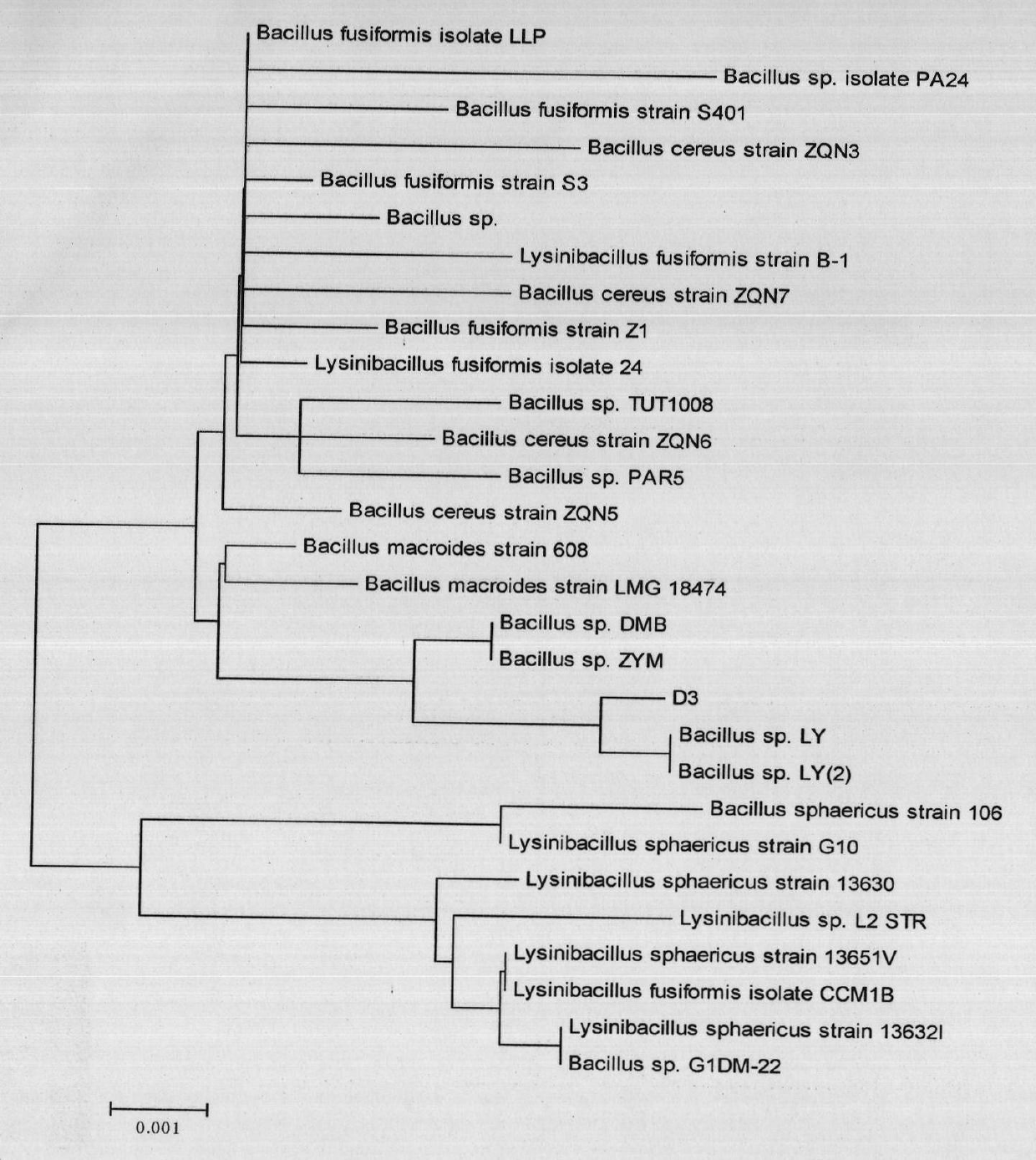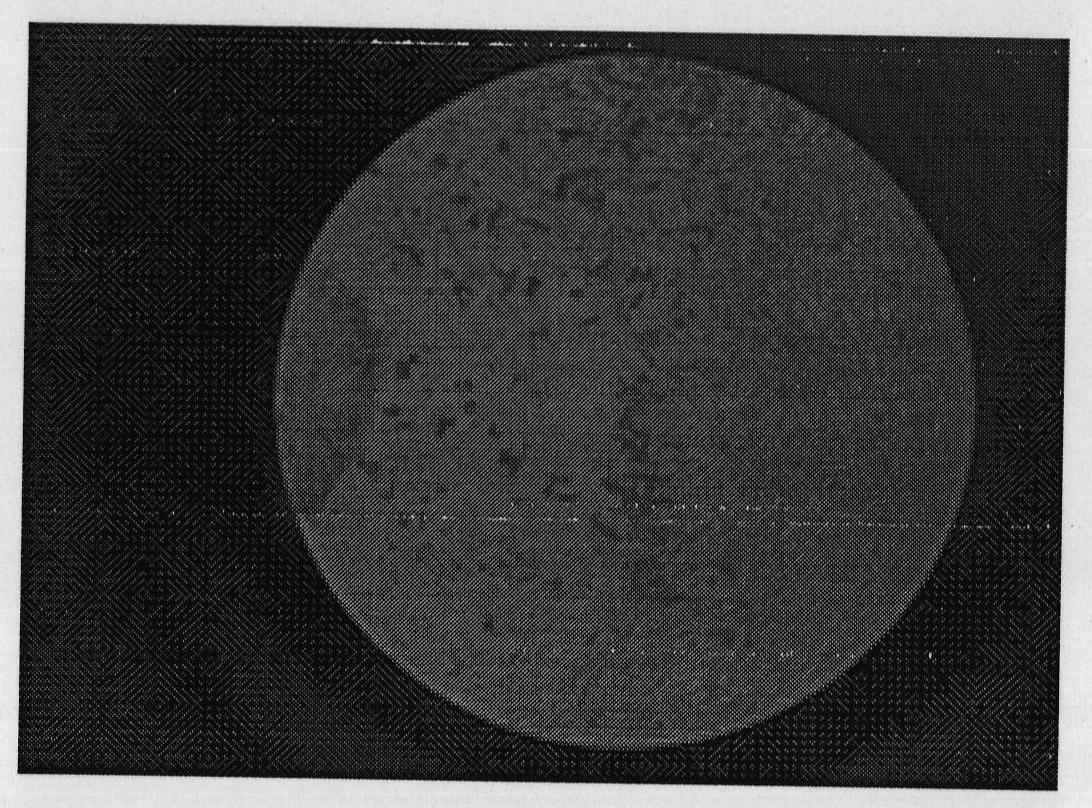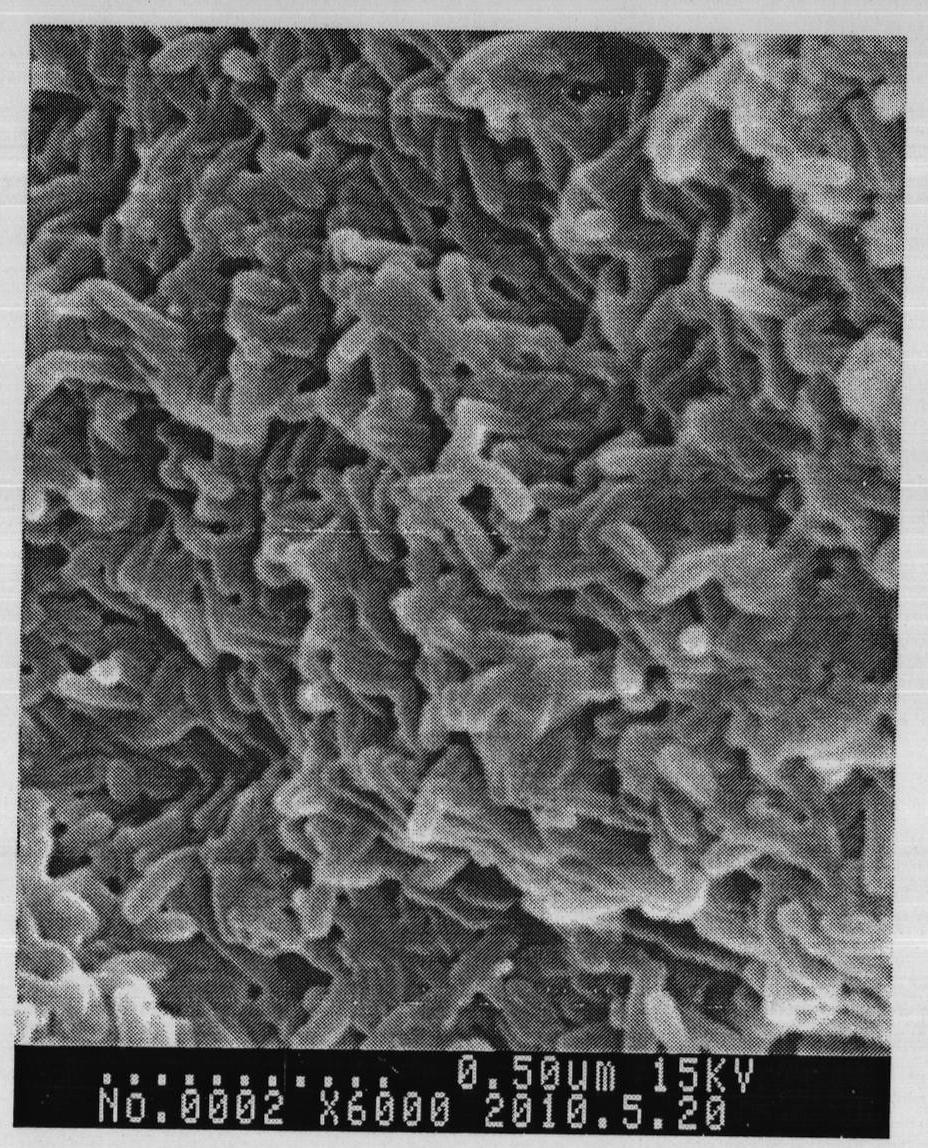Bacillus cereus DA3 strain and preparation method and application thereof
A technology of Bacillus cereus and strains, applied in the field of Bacillus cereus DA3 strains and its acquisition, can solve the problems of not meeting the requirements of spinning, not being able to obtain satisfactory results, and not being practically applied, etc. Pollution, suitable for large-scale industrial production, and short degumming time
- Summary
- Abstract
- Description
- Claims
- Application Information
AI Technical Summary
Problems solved by technology
Method used
Image
Examples
Embodiment 1
[0058] Screening and Obtaining of Flax Degumming Strains
[0059] (1) Sampling rotting seaweed from the Zhoushan sea area of the East China Sea, first put the seaweed and the enrichment medium at a ratio of 1g: 20ml in the enrichment medium and culture it at room temperature for 30 days, then take 0.1ml of the enrichment medium and apply it to the separation medium Culture medium, static culture at 37°C for 1 to 4 days, obtained from the wild-type degumming dominant strain;
[0060] Among them, the formula of the enrichment medium is: 5 g of flax powder, 200 ml of sterile water, and the pH is natural; the formula of the separation medium is: 5 g of flax powder, (NH 4 ) 2 SO 4 5g, K 2 HPO 4 1g, MgSO 4 0.5g, KCl 0.5g, FeSO 4 0.01, 20g agar, 1000mL water, adjust the pH to 9 with NaOH;
[0061] (2) Inoculate 4 loops of the bacterial strain obtained in step (1) into pectin nutrient medium (petri dish diameter 10cm), cultivate at 28°C for 72h, after the formation of col...
Embodiment 2
[0080] In order to enable the strain to maintain a stable high-yielding characteristic, beef extract peptone medium is used as the slant preservation medium. The raw materials and preparation methods of the medium are: 0.5g beef extract, 1g peptone, and 0.5g sodium chloride (pH7.4-7.6) , add water to 100ml constant volume, culture overnight at 37°C 200rpm, add 100ml of freezing buffer; among them, the freezing buffer consists of 0.0627g potassium dihydrogen phosphate, 0.0177g dipotassium hydrogen phosphate, 0.0588g sodium citrate, sulfuric acid heptahydrate Magnesium 0.02645g, glycerin 10ml, add water to volume to 100ml; divide nutrient broth medium (beef extract 0.3g, peptone 1g, sodium chloride 0.5g, add water to 100ml volume, pH7.4-7.6) In 250mL containers, 50mL in each container, after sealing and bandaging, sterilize at 121°C for 20min; after cooling, insert the bacteria loop cultured on a slant for 24h, and shake the flask at a speed of 200r / min and a temperature of 40°C ...
Embodiment 3
[0090] The flax degumming process is as follows:
[0091] Put 5g of the original flax stem into a 250ml conical flask, divide the flax flax and the fermented bacteria liquid into the conical flask at a bath ratio of 1:20, the liquid volume is 100ml, degumming in a shaker at 40°C and 200rpm for 1 day , 2 days and 4 days; when the degumming time is up, remove the degumming solution, boil in a boiling water bath for 5 minutes, rinse with tap water several times to remove bacteria on the linen, and stop degumming.
[0092] Through the observation of degummed flax, it was found that the flax fibers were obviously dispersed after 1 day, and the color of the fermentation broth became dark and turbid; after 2 days of degumming, the original bundled flax was completely dispersed into fibers, and the fermentation broth was obviously thickened; after 4 days of degumming, the degumming rate of flax reached More than 90.
PUM
 Login to View More
Login to View More Abstract
Description
Claims
Application Information
 Login to View More
Login to View More - R&D
- Intellectual Property
- Life Sciences
- Materials
- Tech Scout
- Unparalleled Data Quality
- Higher Quality Content
- 60% Fewer Hallucinations
Browse by: Latest US Patents, China's latest patents, Technical Efficacy Thesaurus, Application Domain, Technology Topic, Popular Technical Reports.
© 2025 PatSnap. All rights reserved.Legal|Privacy policy|Modern Slavery Act Transparency Statement|Sitemap|About US| Contact US: help@patsnap.com



